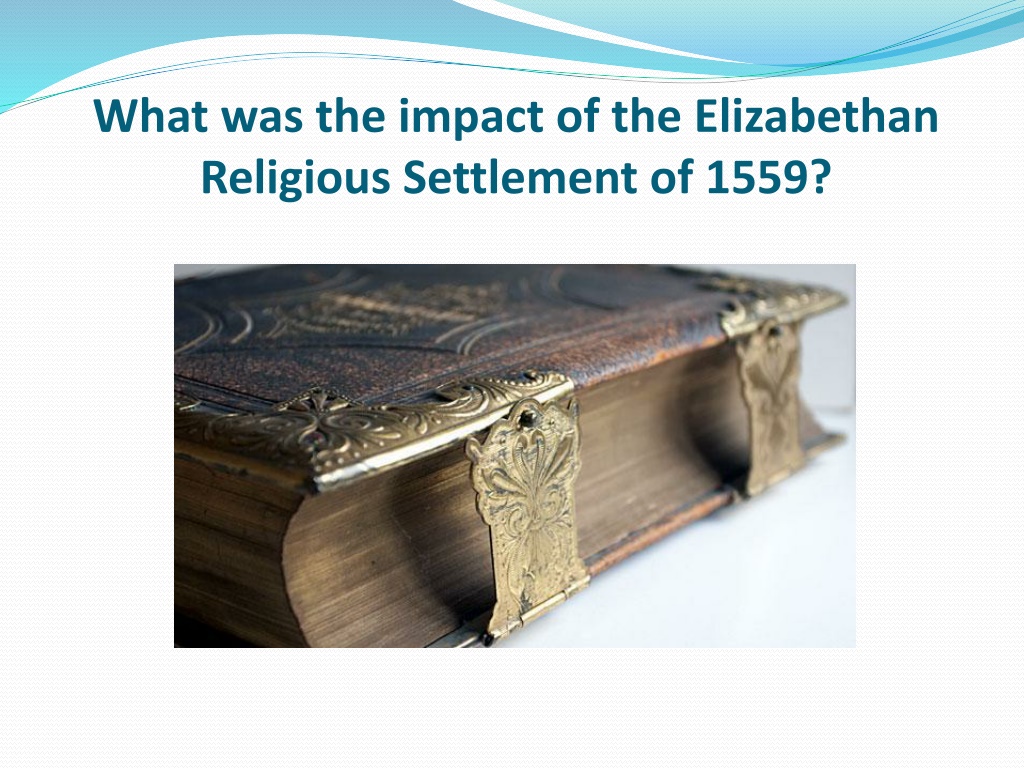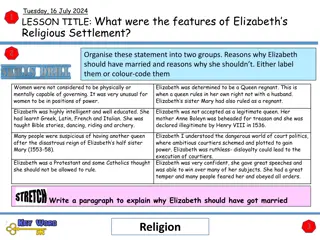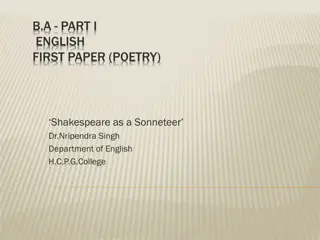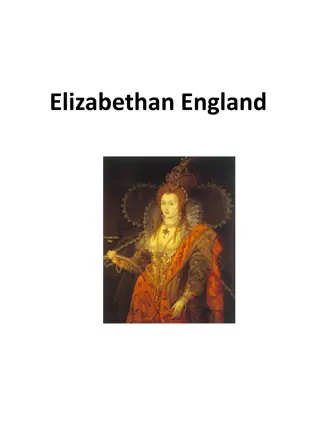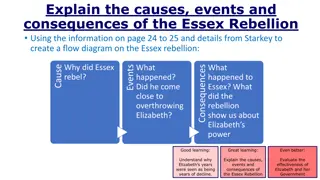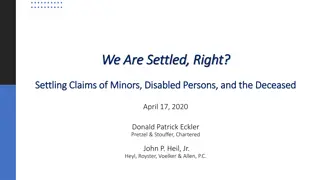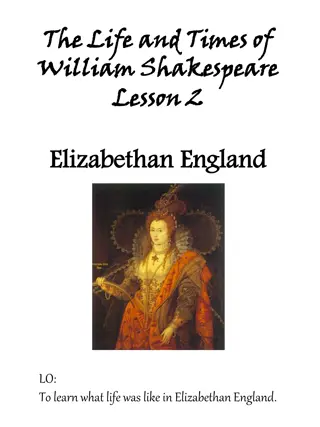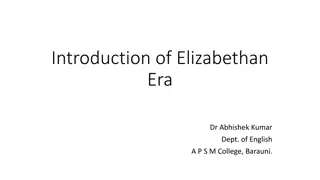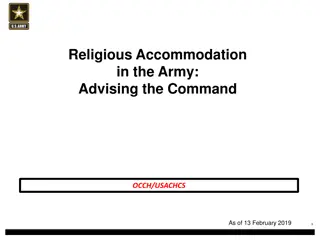Impact of Elizabethan Religious Settlement
The Elizabethan Religious Settlement of 1559 had a significant impact on England, navigating a delicate balance between Protestant and Catholic interests. Despite facing opposition, Queen Elizabeth I enforced the Acts of Supremacy and Uniformity, solidifying her authority over the Church of England. This settlement aimed to establish a compromise that satisfied both Protestant reformers and Catholic traditionalists, ultimately shaping the religious landscape of the era.
Download Presentation

Please find below an Image/Link to download the presentation.
The content on the website is provided AS IS for your information and personal use only. It may not be sold, licensed, or shared on other websites without obtaining consent from the author.If you encounter any issues during the download, it is possible that the publisher has removed the file from their server.
You are allowed to download the files provided on this website for personal or commercial use, subject to the condition that they are used lawfully. All files are the property of their respective owners.
The content on the website is provided AS IS for your information and personal use only. It may not be sold, licensed, or shared on other websites without obtaining consent from the author.
E N D
Presentation Transcript
What was the impact of the Elizabethan Religious Settlement of 1559?
Learning objective to be able to explain the impact of the Elizabethan Religious Settlement of 1559. I can describe the different features of the Elizabethan Religious Settlement. Grade D I can explain the impact Elizabethan Religious Settlement. Grade B I can explain and analyse the impact importance Elizabethan Settlement. Grade A/A* of the and the of Religious
The dilemma facing Elizabeth I in 1558 Elizabeth I became Queen of England in 1558 and was faced with a very tricky dilemma. As daughter of Anne Boleyn, she was the embodiment of the Break with Rome and Royal Supremacy. On her accession, Protestants expected a restoration of Royal Supremacy and a reversal of Mary s policies. On the other hand, if Elizabeth followed a Protestant restoration, she faced a Catholic rebellion as Catholics viewed her as illegitimate and not the rightful monarch of England. Also Elizabeth was a woman and for many it was unacceptable that she was monarch let alone the Head of the Church.
Parliamentary opposition to the Elizabethan Religious Settlement Elizabeth faced important opposition to any religious changes. The House of Lords contained many influential Catholic nobles and bishops. All the bishops had been appointed by Mary therefore all were Catholic.
The Elizabethan Religious Settlement - 1559 The Settlement comprised of two laws Elizabethan Religious The Act of Supremacy. The Act of Uniformity.
The Act of Supremacy - 1559 This Act made Elizabeth Supreme Governor of the Church of England . Although this really was re-establishing the Royal Supremacy, the title of governor was to appease Catholics and those who did not approve of a woman as head of the Church.
The Act of Uniformity - 1559 This act attempted to ensure that everyone toed the line in terms of acts of worship in the new Church of England. Controversial as it was more Protestant although its stance on doctrine was left deliberately vague, transubstantiation and Communion. Was passed by Parliament by a narrow majority. especially on
The Oath of Supremacy The settlement was enforced by all clergymen having to swear the Oath of Supremacy. All but one of the bishops refused to take the Oath and they were replaced by Protestants. Of the 8,000 lower clergy, only 300 refused the Oath. The Acts and the Oath allowed Elizabeth to create a new Church of England which lasted.
The Elizabethan Religious Settlement develops Elizabeth s doctrine remained vague although she did intervene during the Convocations creation of the Thirty- Nine Articles, which defined the doctrine Elizabethan England. To ensure, the Church remained moderate, Elizabeth ensured that Article 29, which denied the real presence in the Communion, was left out. Church of
The Puritan Challenge The Puritans were known as the hotter kind of Protestant . The Puritans challenged the settlement in a number of ways. The vestments controversy saw the Puritans challenge the settlement by refusing to conform about the rules about clerical dress. The Puritans further challenged the settlement in prophesysing where they campaigned for better education through Bible teachings and preaching. The development of the PuritanChoir in Parliament saw bills being challenged by MPs such as Peter Wentworth.
The settlement and Parliament Despite the Puritan challenge and opposition from high ranking clerics, Parliament remained supportive of the settlement. The Act of Seditious Sectaries in 1593 ordered anyone who refused to attend Church of England services out of the country. However, after 1585 relations between monarch and Parliament became strained mainly due to the war with Spain. To raise money for war, Elizabeth used extensively monopolies and royal prerogatives to ansure what she wanted to happen happened. Despite Parliament becoming more vocal and confrontational, particularly in 1601, Elizabeth managed to successfully manage this growing opposition.
Which Act of Supremacy did more to change the relationship between the Crown and the Church? What did it do? Evidence of lasting change between Church and Crown Evidence of no lasting change between Church and Crown Act of Supremacy - 1534 Act of Supremacy - 1559
Plenary Write one sentence definitions for each picture on how it links to the lesson. Homework Complete 3 links that link 2 pictures together. 3 links that link 3 pictures together. 2 links that link 4 pictures together.
